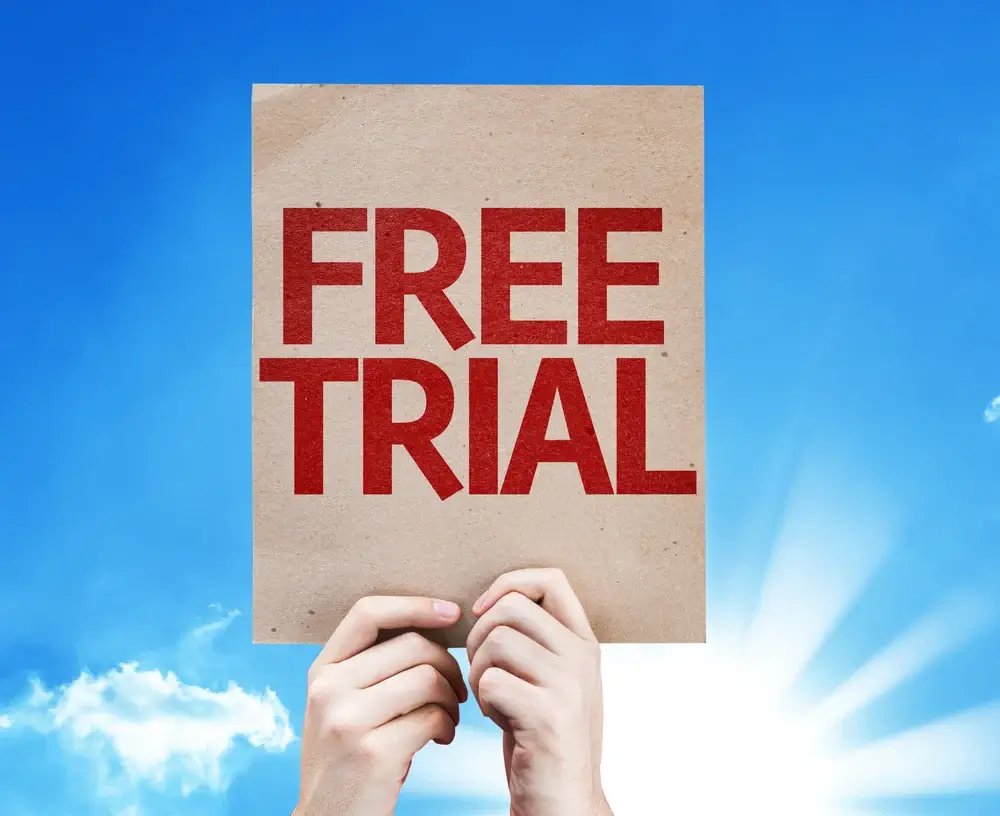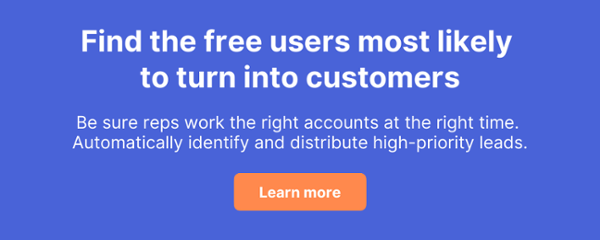How do you most effectively convert free users into paying customers? If you're using or considering a PLG (product led growth) motion in your sales and marketing efforts, there's a lot to think about with lead routing and PLG.
Maybe you offer a free trial, or a free tier of your product. You want to make sure you're capturing as much value from your free user base as you can. Because really, what lead is more qualified than someone who already uses some part of your product? But how you avoid wasting time on free users who will never turn into paying customers?
Converting free users into paying customers becomes particularly important as we face an economic downturn and expect both inbound and outbound lead flow to slow down. Sourcing leads from your existing and future user base becomes even more important. More than ever, we want to make sure we don't overlook any potential lead.
So what qualifying signals do you look for? When do you send a potential lead to an SDR?
The signals you should be looking for come to down to fit and timing (if you haven’t read about the fit and timing quadrant, read this). Ideally, you want to find free users who are a fit and are ready to buy - those users become product qualified leads (PQLs) for sales reps to contact.
Fit
First, let's talk about the (comparatively) easy one - fit. You need to know if a particular user is a fit for your product. For those of us in B2B, that means the user is employed at a company that fits our ICP. That may be based on firmographics like company size, industry, revenue, employee count, etc... If you’re in B2C, you may look at individual demographics, like a user’s age, gender, location, and more. So how do you learn if a user meets those criteria?
Every free user in your database is associated with an email address. That email address can help you identify their name, company, job title, and more. You can use a data enrichment tool or people to figure this out. Particularly if you have work email addresses.
But what if you have a lot of users with free webmail emails (like gmail, yahoo, and so on)? First, consider changing up your registration process to require a work email. Not everyone will want to do this, and some people use webmail emails for work purposes (like freelancers or SMBs). So you risk losing some signups this way, but hopefully you’d end up with a smaller but more relevant free user database.
You could ask for more information at signup. Lots of people are afraid to make their signup forms too long for fear of form abandonment. And you probably shouldn't make your signup form too long. But you can certainly include a few additional fields to collect a few key pieces of information that will help you determine fit.
It's up to you if you want to spend time reaching out to free users who don’t look like a fit. Some companies use automated nurture cadences to keep those users engaged. Others do personalized outreach to see if they get any bites. Any some just ignore users that aren’t a fit. It’s tempting to try to find a diamond in the rough of your non-fit users, but it’s typically a waste of time to reach out to them individually. You should instead focus on the users that fit your ICP.
Regardless, fit is just one of the two signals you need to find the right free users to try to convert to paid users. The other is timing. Let's discuss.
Timing
Timing is all about signals. What do we mean by signals in this context? Those are actions a user takes that indicates some further level of engagement with your company, your product, or the problem your product solves. Some signals could include:
- Product usage
- Website engagement
- Email engagement
- Social activity
- Customer support interactions
- Hand raise
- Free trial timeline or limits
You need to figure out what combination of signals work for you. What actions indicate that you should consider a free user a lead and send them to sales? Some signals should result in an instant distribution - for example, if a free users raises their hand to request a demo of the full product, you should connect with them right away. These are the easy ones. You just need to set up automated lead routing for this use case and be sure a user is connected to sales right away (of course, we think you should use Gradient Works for this lead routing).
But other signals are additive and accrue over time, and this is where it gets more complex. For example, consider a free user who regularly opens your marketing newsletter, reads blog posts on your website, uses different aspects of the product. On their own, these are minor signals that they might be interested in more. But together, they indicate significant interest. Some companies assign a score to each action and then when a user surpasses a score threshold, they’re distributed to sales. To oversimplify this process, imagine that you assign 1 point per action a user takes, and when a user reaches 10 points, they’re considered a PQL and sent to sales.
In addition to engagement signals like those in that example, another signal could be if the user is bumping up against the limits of a free version or trial. Lots of products have functionality that’s only available to paying customers, and when a user encounters that functionality in a limited trial version, they may see an upsell CTA. If a user encounters enough of those CTAs - even if they never click the demo button - you should consider reaching out to them. It certainly seems like they have a need.
Another timing signal relates to the timeline of your trial. If you offer a free trial, it’s likely time limited and a user only has access for a few weeks. What’s the ideal time to reach out to a trial user? If you reach out too early, they won’t have had a chance to try things out fully yet. But if you wait too long, you may have missed your opportunity. Some companies opt to automate a trial nurture sequence that sends messages throughout the trial period, giving the user a chance to learn more when they want to. This can work, especially if it’s personalized to the user’s needs and the actions they’re taking in the trial. But depending on your scale, we recommend having a real person (or people) managing trials. They can do outreach based on trial signals (time left, product actions done or not done, etc..). This is particularly effective if your process is a combination of automated and manual - for example, a trial user is nurtured automatically, but they become a lead that's routed to a sales rep for manual outreach if they do something specific.
You need to identify the timing signals that make sense for your product and your customer. It’s going to take iteration and testing to find these. So how can you identify those signals for your user base?
Finding the right signals for your organization
To find the right signals for your GTM motion, look at past wins and past losses. Of course you can learn a lot from the accounts you’ve successfully upgraded from free to paid users - what criteria do they have in common? Are there particular firmographic or demographic characteristics? Did they do similar things in the product?
But you might be able to learn even more from the ones you did not convert. What criteria do the free users who never upgraded share? If you can figure who won’t convert, you can use that information to find the group you should focus on.
For example... At Union Metrics, we had a very popular free Instagram analytics report. Anyone could come in and run a report on their Instagram account to see how it was performing. It was cute and simple, and hundreds of thousands of people used it. We used it as a PLG motion - to try to convert some of those free report users into paying subscribers. The idea was that some percentage of them would need more than a static free report and want ongoing analytics and all the other functionality our subscribers got.
We quickly learned there was a (large) group of free users who would never ever upgrade. One good indicator was follower count - we could exclude anyone who had fewer than 1,000 followers. Yes, there were probably some diamonds in that rough, accounts that had fewer followers but a clear business need. But we knew that a majority of those lower-follower accounts were just individuals who were curious about their account’s vanity metrics and would never pay anything for analytics. Now this is not to say that every account over 1,000 followers was a fit, but any below definitely were not.
So what are those criteria for you? Exclusion criteria are just as important as inclusion criteria.
This requires coordination and agreement between sales and marketing. Identifying PLG leads is a process that doesn’t clearly live in sales, marketing or customer success. It’s a joint effort across the organization. What criteria are required for a user to become a PQL? You have to agree on this. When you’ve identified a PQL, what’s the process for reaching out to that lead? You need to agree on rules of engagement for free user PQLs - who reaches out to them, when, and with what messaging?
Hopefully this helps you set up a more effective process for converting free users to paying customers.
Like this post? Then you might also like this one about fit and timing and SDRs. Or if you want to implement automated PQL distribution, check out how Gradient Works can do that.





